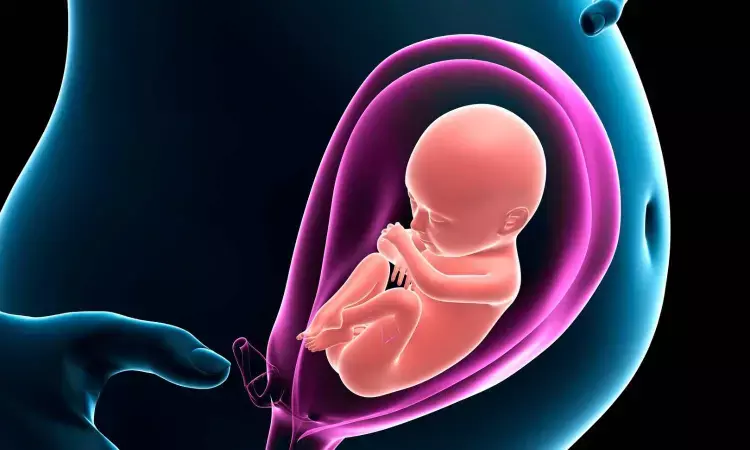- Home
- Medical news & Guidelines
- Anesthesiology
- Cardiology and CTVS
- Critical Care
- Dentistry
- Dermatology
- Diabetes and Endocrinology
- ENT
- Gastroenterology
- Medicine
- Nephrology
- Neurology
- Obstretics-Gynaecology
- Oncology
- Ophthalmology
- Orthopaedics
- Pediatrics-Neonatology
- Psychiatry
- Pulmonology
- Radiology
- Surgery
- Urology
- Laboratory Medicine
- Diet
- Nursing
- Paramedical
- Physiotherapy
- Health news
- Fact Check
- Bone Health Fact Check
- Brain Health Fact Check
- Cancer Related Fact Check
- Child Care Fact Check
- Dental and oral health fact check
- Diabetes and metabolic health fact check
- Diet and Nutrition Fact Check
- Eye and ENT Care Fact Check
- Fitness fact check
- Gut health fact check
- Heart health fact check
- Kidney health fact check
- Medical education fact check
- Men's health fact check
- Respiratory fact check
- Skin and hair care fact check
- Vaccine and Immunization fact check
- Women's health fact check
- AYUSH
- State News
- Andaman and Nicobar Islands
- Andhra Pradesh
- Arunachal Pradesh
- Assam
- Bihar
- Chandigarh
- Chattisgarh
- Dadra and Nagar Haveli
- Daman and Diu
- Delhi
- Goa
- Gujarat
- Haryana
- Himachal Pradesh
- Jammu & Kashmir
- Jharkhand
- Karnataka
- Kerala
- Ladakh
- Lakshadweep
- Madhya Pradesh
- Maharashtra
- Manipur
- Meghalaya
- Mizoram
- Nagaland
- Odisha
- Puducherry
- Punjab
- Rajasthan
- Sikkim
- Tamil Nadu
- Telangana
- Tripura
- Uttar Pradesh
- Uttrakhand
- West Bengal
- Medical Education
- Industry
Improved vitamin D levels tied to prevention of stillbirths

Sweden: A study involving over 4 million pregnancies revealed that each increment of national vitamin D food fortification in two Northern countries with widespread low plasma vitamin D levels (< 50 nmol/l) led to a 15% reduction in stillbirths. The study was published in BioMed Central Pregnancy And Childbirth on 17 May 2023.
The study has shed light on the potential connection between stillbirths and low plasma vitamin D levels. These promising results have sparked interest among healthcare professionals and researchers, raising the possibility of preventing stillbirths through improved vitamin D levels.
The study was a bi-national follow-up study of Vitamin D fortification conducted by Pelle G. Lindqvist and team, which encompassed a comprehensive analysis of pregnancies in Finland between 1994 and 2021 (n = 1,569,739) and Sweden (n = 2,800,730). The researchers examined data from the Medical Birth Registries, focusing on live births and stillbirths. The study compared the incidences of stillbirths before and after the implementation of national vitamin D fortification programs in both countries.
The findings of the study were:
● In Finland, the stillbirth rate showed a notable decline from approximately 4.1 per 1000 pregnancies before 2003 to 3.4 per 1000 pregnancies between 2004 and 2009 (odds ratio [OR] 0.87, 95% CI 0.81–0.93).
● The rate dropped further to 2.8 per 1000 pregnancies after 2010 (OR 0.84, 95% CI 0.78–0.91).
● In Sweden, the stillbirth rate decreased from 3.9 per 1000 pregnancies between 2008 and 2017 to 3.2 per 1000 pregnancies after 2018 (OR 0.83, 95% CI 0.78–0.89).
The study's findings indicate that each increment of vitamin D fortification was associated with a 15% reduction in stillbirths on a national level. The observed correlation suggests that vitamin D may play a crucial role in preventing stillbirths. While these findings are observational and do not establish a causal relationship, they provide valuable insights into the potential benefits of vitamin D fortification in reducing stillbirth rates.
The potential impact of vitamin D fortification on stillbirth prevention is significant. If these findings hold true and national fortification programs reach the entire population, it could represent a major milestone in reducing stillbirths and addressing health inequalities. However, further research is needed to establish a causal relationship between vitamin D levels and stillbirth risk. Additionally, the long-term effects and optimal dosage of vitamin D fortification require careful consideration.
The association between national vitamin D fortification programs and reduced stillbirth rates in Finland and Sweden is an encouraging development in the field of reproductive health. The study suggests that improving vitamin D levels through such initiatives may have a positive impact on preventing stillbirths. As scientists delve deeper into understanding the underlying mechanisms, the findings underscore the potential benefits of vitamin D fortification and its role in promoting healthier pregnancies and reducing the incidence of stillbirths.
Reference:
Lindqvist, P. G., Gissler, M., & Essén, B. (2023). Is there a relation between stillbirth and low levels of vitamin D in the population? A bi-national follow-up study of vitamin D fortification. BMC Pregnancy and Childbirth, 23(1), 359. https://doi.org/10.1186/s12884-023-05673-8
Dr Kamal Kant Kohli-MBBS, DTCD- a chest specialist with more than 30 years of practice and a flair for writing clinical articles, Dr Kamal Kant Kohli joined Medical Dialogues as a Chief Editor of Medical News. Besides writing articles, as an editor, he proofreads and verifies all the medical content published on Medical Dialogues including those coming from journals, studies,medical conferences,guidelines etc. Email: drkohli@medicaldialogues.in. Contact no. 011-43720751


